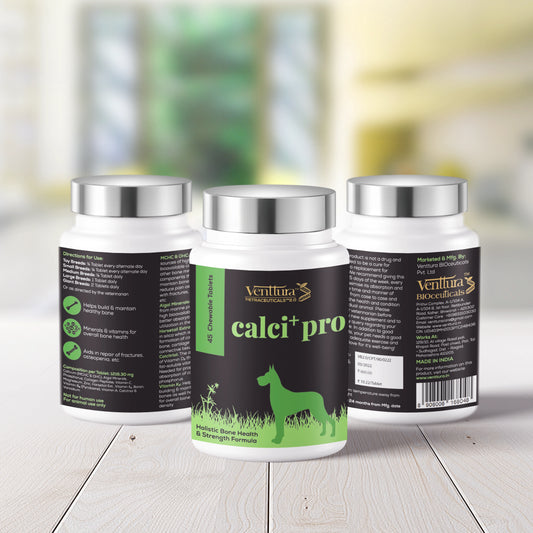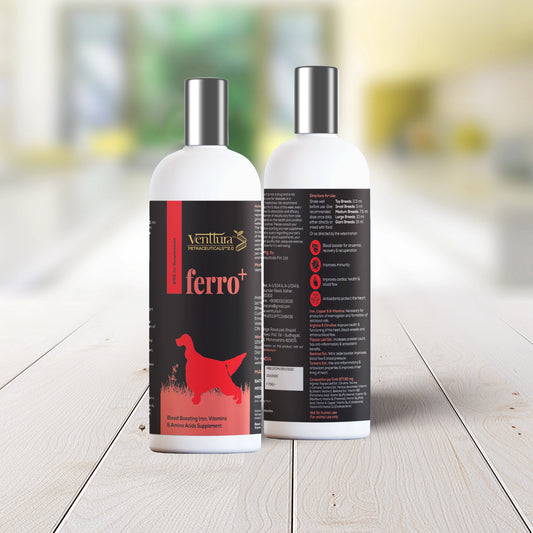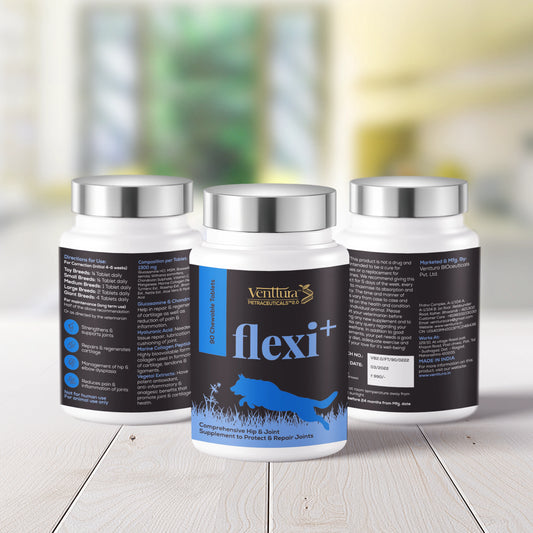Introduction
The genus name Panax originates from the Greek words pan, meaning “all,” and axos, meaning “cure,” collectively signifying “a remedy for all diseases” [1]. Among the various species of ginseng, Panax ginseng is one of the most widely utilized. Indigenous to Korea, China, and Japan, this plant has held a prominent place in traditional medicine for thousands of years, primarily used to combat fatigue and general weakness [2]. Panax ginseng Meyer, a member of the Araliaceae family, is a perennial herb characterized by its clusters of three to five leaflets. Unlike many fast-growing herbs, ginseng requires approximately 5 to 7 years to reach maturity after seed sowing. This extended growth period allows the plant to accumulate a wealth of valuable phytochemicals that contribute to its medicinal efficacy [3]. In 1843, Russian botanist Carl A. Meyer designated the genus name “Panax” for this herb, emphasizing its “all-healing” nature in reference to its Greek roots [4].Every part of the Panax ginseng plant—roots, stems, leaves, and fruits—contains bioactive substances that offer therapeutic effects for a variety of ailments [5].
Phytochemical Composition of Ginseng
The ethnopharmacological value of Panax ginseng is primarily attributed to a diverse group of bioactive compounds known as ginsenosides [5]. Extensive scientific research into the medicinal and therapeutic properties of P. ginseng has centered largely around these ginsenosides [2]. Ginsenosides are a type of tetracyclic triterpenoid saponins.[5]. Approximately 200 types of ginsenosides have been reported, including both major (e.g., Rb1, Rb2, Rc, Rd, Re, Rg1) and minor variants (e.g., Rg3, Rh1, Rh2) [6]. These compounds are distributed throughout the plant, and hundreds of naturally occurring forms have been identified in different parts, including the root, stem, leaves, and berries [7]. Apart from saponins, ginseng is also rich in polyphenolic compounds, polyacetylenes, and acidic polysaccharides, all of which contribute to its pharmacological profile [4]. Ginsenosides interact with a variety of hormone receptors and are generally classified into three main structural types: protopanaxadiol, protopanaxatriol, and oleanolic acid [8]. Ginseng is also classified into three types depending on the processing technique: red ginseng, made by steaming and drying fresh roots once; white ginseng, which is sun-dried naturally; and black ginseng, created by steaming and drying the root three times [9] [10]. One of the most studied health benefits of ginseng lies in its impact on the nervous system. It has been shown to enhance cognitive functions such as memory, learning capacity, sensory responsiveness, and mental alertness [11]. These neurostimulant effects are primarily attributed to the presence of saponins, which are known to increase the activity of adrenocorticotropic hormone (ACTH) in the brain, thereby promoting heightened mental arousal [12].
Benefits of Ginseng:-
Cognitive Function
Canine cognitive dysfunction syndrome (CCDS), a condition frequently observed in aging dogs, exhibits neuropathological features similar to those seen in Alzheimer’s disease in humans [12]. Ginseng has demonstrated promising cognitive-enhancing effects in both humans and rodent models, which suggests its potential utility in managing cognitive decline in dogs. These cognitive benefits are primarily attributed to ginsenosides Rb1 and Rg1, which possess neuroprotective properties [14]. In clinical studies involving Alzheimer’s patients, ginseng intake was associated with improved cognitive performance, while in healthy individuals, it contributed to enhanced working memory [7]. Likewise, in rodent studies, ginsenoside supplementation improved learning capabilities and promoted neuronal survival [15]. A study evaluating a ginseng-based supplement in senior dogs reported improved memory and attentiveness; however, the lack of a placebo group and reliance on subjective owner assessments limit the validity of these observations [16]. Therefore, further research employing standardized cognitive evaluation tools is needed to clarify the role of ginseng in canine cognitive health. Clinical studies in humans have shown that ginseng supplementation can enhance mental and cognitive performance, including improved attention span and mental calculation abilities, thereby increasing overall intellectual work efficiency [17]. Furthermore, Korean ginseng extract has been observed to positively influence working memory, mood, and subjective perceptions of quality of life [18]. Given that cognitive decline, anxiety, and neuroinflammation are also prevalent in aging companion animals such as dogs and cats, the neuroprotective properties of ginseng may confer comparable advantages in pets. By supporting neuronal function and mitigating oxidative stress, ginseng could serve as a valuable nutraceutical for managing age-related cognitive disorders, ultimately enhancing the well-being of aging animals.
Antioxidant benefits
Oxidative stress plays a significant role in aging and the progression of chronic diseases in both humans and animals, including pets such as cats and dogs. Ethanol and methanol extracts of ginseng leaves have demonstrated the ability to neutralize free radicals effectively. Among these, ethanol extracts exhibit especially potent antioxidant activity through mechanisms such as radical scavenging and metal ion chelation. Ginseng also enhances the activity of vital antioxidant enzymes, including glutathione peroxidase and superoxide dismutase, both of which protect cells from oxidative injury. These benefits were confirmed in a clinical study where healthy volunteers who consumed Korean ginseng exhibited significantly reduced levels of reactive oxygen species and oxidative stress biomarkers [19]
Immunoenhancing Effects
This study investigated the effects of ginseng on the immune function of dogs, focusing on a compound called ginseng total saponin (GTS). While GTS did not directly enhance the pathogen-fighting capacity of immune cells, it did stimulate peripheral blood mononuclear cells (PBMCs) to produce a factor that improved the activity of polymorphonuclear cells (PMNs) and monocytes. This immunostimulatory effect was attributed to tumor necrosis factor-alpha (TNF-α), a key cytokine involved in immune responses. Notably, when TNF-α activity was inhibited, the enhanced immune response was no longer observed. These findings indicate that GTS may support canine immune function indirectly by promoting TNF-α production, thereby enhancing the efficiency of immune cells in combating infections [20]
Anti-inflammatory benefits
Ginseng has drawn attention for its anti-inflammatory properties, which have been demonstrated across in vitro, in vivo, and clinical studies [19]. Studies have shown that specific ginsenosides, the active compounds in ginseng, play a significant role in modulating inflammation. It was observed that ginsenoside Rc suppressed cytokine production from macrophages, leading to a reduction in inflammatory responses [21]. Ginseng has also been found to interfere with other pro-inflammatory signaling pathways in immune cells, further reinforcing its role as an anti-inflammatory agent [19]. Notably, a clinical study revealed that patients who consumed ginseng following curative surgery had significantly better outcomes, showing a 35% higher disease-free survival rate over five years and up to a 38% greater overall survival rate compared to non-users [22]. These findings not only highlight the therapeutic potential of ginseng in human health but also support its use in companion animals to manage or prevent inflammation-related conditions.
Ginseng and male reproductive function
Ginseng, often called the “King of all herbs,” has been widely used in traditional Chinese medicine to support overall health and enhance sexual wellness. It is especially valued for its potential aphrodisiac properties and is commonly used to help manage sexual dysfunction and improve sexual behavior. Research in animal models has shown that ginseng can boost libido and sexual activity. In addition, ginseng has been associated with improved sperm quality and count in both healthy individuals and those facing fertility challenges due to medical treatments. These effects are largely attributed to ginsenosides, the main active compounds in ginseng. For pets—particularly breeding males or those with reproductive concerns—ginseng supplementation may help support fertility and reproductive health. Studies have shown that ginsenoside Re can raise levels of neurotransmitters like acetylcholine and dopamine in rats, which contributes to enhanced sexual desire in males. In fact, ginseng is widely recognized in many Asian cultures for its positive influence on male reproductive health. [23]
Anti-Obesity Effects
Obesity is a growing concern in animals like dogs, often leading to serious conditions such as diabetes, cardiovascular disease, and reduced life expectancy. In a recent study, researchers investigated the anti-obesity potential and safety of Korean red ginseng extract in dogs by administering it in the form of a diet or snack over an eight-week period. The study involved healthy beagles that underwent regular health monitoring, including physical exams, blood tests, and CT scans to assess fat levels. Notably, dogs that consumed the red ginseng-supplemented diet experienced a meaningful drop in body weight, body condition score, and leptin levels by the end of the trial. CT analysis confirmed a reduction in fat accumulation in dogs receiving the diet, while those given the ginseng snack showed no significant changes [24]. Ginseng extracts—especially those rich in saponins—appear to suppress weight gain. For instance, in rats fed a high-fat diet, supplementation with ginseng extract reduced overall body weight gain, possibly through the inhibition of pancreatic lipase, a key enzyme in fat digestion [25]. A similar experiment using ginseng extract showed reduced body fat, fat cell size, and downregulation of genes involved in fat storage [26]. These mechanisms may also hold relevance in veterinary settings for addressing obesity in pets. Black ginseng has also attracted attention for its potential metabolic benefits in dogs. In one study, beagle dogs given black ginseng (80 mg/kg BW/day) over an eight-week period showed signs of improved metabolic function [27]. However, the study's limited sample size of only four dogs and the absence of a control group reduce the strength of its conclusions. Another investigation administered a combination of black ginseng (100 mg/kg BW/day) and silkworm to overweight dogs on a high-energy diet for 12 weeks. This treatment led to decreased cholesterol and triglyceride levels, along with suppressed expression of obesity-related genes, compared to dogs that received the high-energy diet alone [28]. These outcomes suggest that ginseng could be a promising supplement for managing lipid metabolism in dogs.
Effects on Gut Microbiota and Digestive Health
The gut microbiota plays a vital role in overall health, not only in humans but also in companion animals such as dogs. Given the similarity between human and canine gut microbiota, a recent study investigated the potential of red ginseng dietary fiber as a functional prebiotic in dogs. In this controlled trial, forty healthy dogs were assigned to one of three groups: a low-dose red ginseng fiber group, a high-dose group, and a control group receiving no supplementation. Over the course of eight weeks, fecal samples were collected at regular intervals to assess changes in microbial populations. The results revealed a significant increase in gut bacterial diversity among the dogs receiving red ginseng fiber, a positive indicator of gut health. Additionally, the gut microbiota of treated dogs became more stable over time, suggesting enhanced digestive efficiency and stronger resistance to gastrointestinal pathogens. [29]
Antimicrobial activity
Ginseng, particularly its extracts and active ginsenosides, has shown promising antiviral and antibacterial activity, making it a potential supplement for enhancing immune defense not just in humans, but also in pets prone to infections like respiratory or gastrointestinal illnesses. Studies have demonstrated that Korean Red Ginseng (KRG) can combat respiratory syncytial virus (RSV) in mice by reducing excessive inflammation and promoting the proliferation of immune cells [30]. Furthermore, specific ginsenosides such as Rg1, Re, Rf, Rh1, Rg2(s), Rg2(r), Rb1, Rc, Rb2, Rd, and Rg3 variants have been found to strengthen antiviral defenses, especially against the H5N1 influenza virus [31]. Ginseng’s antiviral efficacy also extends to strains like H1N1, H3N2, and H9N2, and it has shown inhibitory activity against a wide range of viruses, including coxsackievirus B3, enterovirus 71, rhinovirus 3, herpesviruses, hepatitis A and B, and even feline calicivirus—a common infection in cats. In terms of antibacterial action, ginseng can mitigate the effects of E. coli-induced sepsis by suppressing pro-inflammatory cytokines such as TNF-α, IFN-γ, and IL-6. Notably, ginseng saponins have shown synergistic effects when used with antibiotics like kanamycin and cefotaxime, helping disrupt the cell membranes of antibiotic-resistant Staphylococcus aureus, thereby enhancing bacterial clearance. These findings highlight the potential of ginseng as a supportive therapy in managing infections in companion animals, especially in light of growing antibiotic resistance[19].
Enhancement of Physical Performance and Fatigue Reduction
Ginseng is widely recognized as a natural supplement that enhances physical vitality, including strength, energy, and endurance, making it a subject of interest not only in human health but potentially for improving vitality in aging or active pets such as dogs and cats. Ginsenoside Rb1 has shown particular promise in reducing fatigue through mechanisms that involve lowering oxidative stress in muscle tissue and improving cellular energy metabolism [32]. Additionally, ginseng has been found to inhibit lipid peroxidation and hydroxyl radical damage while boosting mitochondrial function, which contributes to increased physical endurance and recovery [33].. These properties suggest that ginseng could be beneficial in enhancing stamina and muscular resilience in pets, especially working dogs or older animals experiencing fatigue and reduced mobility. In human studies, ginseng—either administered alone or in combination with vitamins—has been associated with improvements in psychomotor performance [34], enhanced work capacity [35], and reduced lactate accumulation during physical activity [36]. These exercise-related benefits are thought to be mediated through ginseng’s corticosteroid-like effects on the pituitary gland, its ability to modulate oxidative balance, and its enhancement of oxygen uptake, which in turn lowers lactate production. [7].
Ginseng’s Anticancer Activity
Research in human medicine has provided valuable insights into the anti-cancer properties of Panax ginseng. Epidemiological studies conducted on over 4,600 individuals showed that those who regularly consumed Korean ginseng had a lower incidence of cancers such as those of the liver, stomach, and lung, further confirming its role in primary cancer prevention [37] [38]. Both saponin and non-saponin fractions of ginseng have demonstrated broad anti-tumor activity against a variety of cancer cell lines [1]. In animal models, ginsenoside Rg3 successfully inhibited lung metastasis of colon cancer cells, providing preclinical evidence for its role in halting cancer spread [39]. Korean red ginseng (KRG) has also been studied for its ability to trigger programmed cell death (apoptosis) and reduce telomerase activity in leukemia cells—an important mechanism since telomerase is often overexpressed in many types of cancer [40]. Furthermore, ginsenosides Rg3 and Rh2 have been particularly highlighted for their strong anticancer effects, including the ability to sensitize drug-resistant breast cancer cells to chemotherapy agents [41]. Given the overlapping biological mechanisms in mammals, these ginseng-derived compounds may offer promising adjunctive or preventative support in the treatment of cancer in pets. Further veterinary-specific research could help establish their safety, efficacy, and dosing for use in dogs and cats.
Heptoprotective effects
A study investigating the impact of Panax ginseng on liver enzyme activity in rats fed a high-cholesterol diet highlights its hepatoprotective potential. Conditions such as obesity, hyperlipidemia, and elevated cholesterol are known contributors to serious metabolic disorders, making natural therapeutic options increasingly important. Ginseng has been recognized for its ability to modulate liver enzyme levels and support liver function. In a study, 24 male Wistar Albino rats were divided into three groups: a control group receiving a standard diet, a high-cholesterol group, and a third group that received both a high-cholesterol diet and Panax ginseng root powder. After 40 days, blood samples were analyzed for key liver enzymes. The high-cholesterol group showed significantly elevated AST, ALT, and GGT levels, indicating liver damage. In contrast, rats supplemented with ginseng exhibited notably lower levels of these enzymes, suggesting a protective effect. ALP levels, however, did not differ significantly among the groups. These findings suggest that Panax ginseng may also contribute to maintaining liver health in pets, particularly those susceptible to obesity or metabolic disorders [42]. The liver-supportive potential of Korean ginseng is further reinforced by its well-documented ability to facilitate detoxification of harmful substances, protect hepatic tissue from injury, and stimulate both regeneration and functional recovery of the liver. These effects are largely attributed to its pharmacologically active constituents, including ginsenosides Rb1, Rg1, Rf, Ro, and other ginseng-derived extracts [1].
Efficacy of relieving pain
Studies involving sensory neurons have shown that Korean ginseng possesses the ability to inhibit calcium channels located on these neurons, which are closely associated with pain signal transmission [1].
Anti-diabetic efficacy
Several studies suggest that it can help stabilize blood glucose levels, particularly by reducing postprandial spikes in both diabetic and non-diabetic human subjects [43] [44]. Ginseng saponins, particularly ginsenoside Rh2, have demonstrated significant potential in lowering elevated blood glucose levels and alleviating diabetes symptoms, especially in models induced by streptozotocin (STZ), a compound commonly used to mimic diabetic conditions. Korean ginseng also exhibits insulinotropic effects by stimulating insulin secretion and contains compounds with insulin-like activity. Some of the key pharmacologically active constituents contributing to these effects include ginsenosides Rb2 and Rh2, as well as acidic peptides, adenosine, and pyroglutamic acid [1].
Cardiac Function
Ginseng’s bioactive components have been found to support heart health by enhancing nitric oxide (NO) synthesis, reducing oxidative stress caused by reactive oxygen species (ROS), improving vascular circulation, and maintaining lipid balance [1]. Calcium ions (Ca²⁺) play a crucial role in cardiac muscle contraction and intracellular signaling. Studies indicate that ginsenosides can influence Ca²⁺ influx, thereby improving overall cardiac performance. For instance, ginsenoside Rb1 has been shown to mitigate cardiac hypertrophy in rats, offering further evidence of ginseng’s heart-protective capacity [46]. Panax ginseng also appears to enhance circulatory health by promoting NO release from endothelial cells, which leads to vasodilation and subsequently lowers blood pressure [47]. Moreover, ginseng contains components with anticoagulant properties, potentially reducing the risk of thrombosis. In both laboratory and animal studies, ginsenosides Rg1, Rg3, and aqueous extracts of Korean Red Ginseng (KRG) have been found to decrease platelet aggregation [19]. In the studies conducted, researchers administered ether and ethanol-based ginseng extracts to anesthetized dogs and noted a significant reduction in heart rate, central venous pressure, and arterial pressure. These effects suggested that ginseng might exhibit alpha-adrenergic blocking activity, which could be valuable for managing cardiovascular conditions in canine patients [48] [49]. Such findings provide an important historical foundation for considering ginseng as a supportive supplement in veterinary cardiology. [4]
Conclusion
In conclusion, Panax ginseng demonstrates significant promise as a natural nutraceutical for enhancing the overall health and well-being of pets. Its diverse pharmacological properties—including support for cognitive function, antioxidant, anti-inflammatory, immunomodulatory, antidiabetic, hepatoprotective etc—offer potential benefits in managing stress, supporting immune function, and improving vitality in companion animals. As research continues to expand, incorporating ginseng into pet supplements could serve as a valuable addition to integrative veterinary care, supporting a more holistic approach to pet health. Recognizing the growing body of evidence supporting ginseng’s role in enhancing cognitive function and overall vitality, we at Venttura have incorporated ginseng into Nutri+ Pro formulation. This addition is aimed at promoting mental sharpness, mitigating age-related cognitive decline, and supporting the overall resilience and well-being of companion animals.
Nutri+pro- https://venttura.com/products/multivitamin-supplement-for-dogs
References
1. Choi K. T. (2008). Botanical characteristics, pharmacological effects and medicinal components of Korean Panax ginseng C A Meyer. Acta pharmacologica Sinica, 29(9), 1109–1118. https://doi.org/10.1111/j.1745-7254.2008.00869.x
2. Kim J. H. (2018). Pharmacological and medical applications of Panax ginseng and ginsenosides: a review for use in cardiovascular diseases. Journal of ginseng research, 42(3), 264–269. https://doi.org/10.1016/j.jgr.2017.10.004
3. Mancuso, C., & Santangelo, R. (2017). Panax ginseng and Panax quinquefolius: From pharmacology to toxicology. Food and chemical toxicology : an international journal published for the British Industrial Biological Research Association, 107(Pt A), 362–372. https://doi.org/10.1016/j.fct.2017.07.019
4. Saba E, MA Sandhu, A Yousaf, U Rashid & MH Rhee, 2023. Ginseng in veterinary practice: benefits and considera tion. In: Complementary and Alternative Medicine: One Health Perspective (Sindhu ZuD, B Aslam, U Uslu & M Mohsin, eds): FahumSci, Lahore, Pakistan, pp: 244-250. ISBN: 978-627-7745-01-1. https://doi.org/10.61748/CAM.2023/033
5. Wee, J. J., Mee Park, K., & Chung, A. S. (2011). Biological Activities of Ginseng and Its Application to Human Health. In I. F. F. Benzie (Eds.) et. al., Herbal Medicine: Biomolecular and Clinical Aspects. (2nd ed.). CRC Press/Taylor & Francis.
https://pubmed.ncbi.nlm.nih.gov/22593942/
6. Qi, L. W., Wang, C. Z., & Yuan, C. S. (2011). Isolation and analysis of ginseng: advances and challenges. Natural product reports, 28(3), 467–495. https://doi.org/10.1039/c0np00057d
7. Pezzali, J. G., & Shoveller, A. K. (2024). Herbal paw-sibilities: potential use and challenges of Astragalus membranaceus and Panax species (ginseng) in diets intended for cats and dogs. Animal frontiers : the review magazine of animal agriculture, 14(3), 17–27. https://doi.org/10.1093/af/vfae009
8. Pace, R., E.M. Martinelli, N. Sardone, and E. De Combarieu. 2015. Metabolomic evaluation of ginsenosides distribution in Panax genus (Panax ginseng and Panax quinquefolius) using multivariate statistical ana lysis. Fitoterapia. 101:80–91. doi:10.1016/j.fitote.2014.12.013
9. Koh, Eunmi & Jang, Ok‐Hee & Hwang, Kyu‐Hyon & An, Young‐Nam & Moon, Bo. (2014). Effects of Steaming and Air-Drying on Ginsenoside Composition of Korean Ginseng (Panax ginseng C.A. Meyer). Journal of Food Processing and Preservation. 39. 10.1111/jfpp.12412.
10. Lee, S. M., Bae, B. S., Park, H. W., Ahn, N. G., Cho, B. G., Cho, Y. L., & Kwak, Y. S. (2015). Characterization of Korean Red Ginseng (Panax ginseng Meyer): History, preparation method, and chemical composition. Journal of ginseng research, 39(4), 384–391. https://doi.org/10.1016/j.jgr.2015.04.009
11. Park KC, H Jin, R Zheng, S Kim, SE Lee, BH Kim & SV Yim, 2019. Cognition enhancing effect of panax ginseng in Korean volunteers with mild cognitive impairment: a randomized, double-blind, placebo-controlled clinical trial. Translational and Clinical Pharmacology 27:92-97. https://www.koreamed.org/SearchBasic.php?RID=2458948
12- Ma YA, JS Eun & KW Oh, 2007. Therapeutic effects of ginseng on psychotic disorders. Journal of Ginseng Research 31:117-126.
13- Uchida, K., H. Nakayama, and N. Goto. 1991. Pathological studies on cere bral amyloid angiopathy, senile plaques and amyloid deposition in vis ceral organs in aged dogs. J. Vet. Med. Sci. 53(6):1037–1042. https://pubmed.ncbi.nlm.nih.gov/1790213/
14. Smith, I., E. Williamson, S. Putnam, J.A. Farrimond, and B.J. Whalley. 2014. Effects and mechanisms of ginseng and ginsenosides on cognition. Nutr. Rev. 72:319–333.
https://doi.org/10.1111/nure.12099
15. Liu, L., T. Hoang-Gia, H. Wu, M.-R. Lee, L. Gu, C. Wang, B.-S. Yun, Q. Wang, S. Ye, and C. Sung. 2011. Ginsenoside Rb1 improves spatial learning and memory by regulation of cell genesis in the hippocampal subregions of rats. Brain Res. 1382:147–154. doi: https://doi.org/10.1016/j.brainres.2011.01.051
16. Hielm-Björkman, A., Reunanen, V., Meri, P., & Tulamo, R. M. (2007). Panax Ginseng in combination with brewers' yeast (Gerivet) as a stimulant for geriatric dogs: a controlled-randomized blinded study. Journal of veterinary pharmacology and therapeutics, 30(4), 295–304. https://doi.org/10.1111/j.1365-2885.2007.00876.x
17. Kennedy DO, Scholey AB. Ginseng: potential for the enhancement of cognitive performance and mood. Pharmacol Biochem Behav 2003; 75: 687–700.
https://doi.org/10.1016/s0091-3057(03)00126-6
18. Kennedy DO, Reay JL, Scholey AB. Effects of 8 weeks administra tion of Korean Panax ginseng extract on the mood and cognitive per formance in healthy individuals. Proceedings of the 9th International Ginseng Symposium; 2006, Geumsan, Chungnam, Korea, Korean Society of Ginseng. http://dx.doi.org/10.5142/JGR.2007.31.1.034
19 Ratan, Z. A., Haidere, M. F., Hong, Y. H., Park, S. H., Lee, J. O., Lee, J., & Cho, J. Y. (2021). Pharmacological potential of ginseng and its major component ginsenosides. Journal of ginseng research, 45(2), 199–210. https://doi.org/10.1016/j.jgr.2020.02.004
20- Kang, K. A., Kang, J. H., & Yang, M. P. (2008). Ginseng total saponin enhances the phagocytic capacity of canine peripheral blood phagocytes in vitro. The American journal of Chinese medicine, 36(2), 329–341. https://doi.org/10.1142/S0192415X08005801
21- Yu, T., Yang, Y., Kwak, Y. S., Song, G. G., Kim, M. Y., Rhee, M. H., & Cho, J. Y. (2017). Ginsenoside Rc from Panax ginseng exerts anti-inflammatory activity by targeting TANK-binding kinase 1/interferon regulatory factor-3 and p38/ATF-2. Journal of ginseng research, 41(2), 127–133. https://doi.org/10.1016/j.jgr.2016.02.001
22. Ahn, J. Y., Choi, I. S., Shim, J. Y., Yun, E. K., Yun, Y. S., Jeong, G., & Song, J. Y. (2006). The immunomodulator ginsan induces resistance to experimental sepsis by inhibiting Toll-like receptor-mediated inflammatory signals. European journal of immunology, 36(1), 37–45. https://doi.org/10.1002/eji.200535138
23. Leung, K. W., & Wong, A. S. (2013). Ginseng and male reproductive function. Spermatogenesis, 3(3), e26391. https://doi.org/10.4161/spmg.26391
24. Bae, S., & Oh, T. (2019). Anti-obesity effects of Korean red ginseng extract in healthy beagles. Polish journal of veterinary sciences, 22(2), 385–389. https://doi.org/10.24425/pjvs.2019.129298
25. Karu, N., Reifen, R., & Kerem, Z. (2007). Weight gain reduction in mice fed Panax ginseng saponin, a pancreatic lipase inhibitor. Journal of agricultural and food chemistry, 55(8), 2824–2828. https://doi.org/10.1021/jf0628025
26. Shin, S. S., & Yoon, M. (2018). Korean red ginseng (Panax ginseng) inhibits obesity and improves lipid metabolism in high fat diet-fed castrated mice. Journal of ethnopharmacology, 210, 80–87. https://doi.org/10.1016/j.jep.2017.08.032
27. Yoon, D., Kim, Y. J., Lee, W. K., Choi, B. R., Oh, S. M., Lee, Y. S., Kim, J. K., & Lee, D. Y. (2020). Metabolic Changes in Serum Metabolome of Beagle Dogs Fed Black Ginseng. Metabolites, 10(12), 517. https://doi.org/10.3390/metabo10120517
28. Park, M., Kim, K. H., Jaiswal, V., Choi, J., Chun, J. L., Seo, K. M., Lee, M. J., & Lee, H. J. (2021). Effect of black ginseng and silkworm supplementation on obesity, the transcriptome, and the gut microbiome of diet-induced overweight dogs. Scientific reports, 11(1), 16334. https://doi.org/10.1038/s41598-021-95789-8
29. Song, H., Lee, J., Yi, S., Kim, W. H., Kim, Y., Namgoong, B., Choe, A., Cho, G., Shin, J., Park, Y., Kim, M. S., & Cho, S. (2023). Red Ginseng Dietary Fiber Shows Prebiotic Potential by Modulating Gut Microbiota in Dogs. Microbiology spectrum, 11(4), e0094923. https://doi.org/10.1128/spectrum.00949-23
30. Lee J, Lee Y-N, Lee Y-T, Hwang H, Kim K-H, Ko E-J, Kim M-C, Kang S-M. Ginseng protects against respiratory syncytial virus by modulating multiple immune cells and inhibiting viral replication. Nutrients 2015;7:1021e36.
https://www.mdpi.com/2072-6643/7/2/1021
31. Park, E. H., Yum, J., Ku, K. B., Kim, H. M., Kang, Y. M., Kim, J. C., Kim, J. A., Kang, Y. K., & Seo, S. H. (2014). Red Ginseng-containing diet helps to protect mice and ferrets from the lethal infection by highly pathogenic H5N1 influenza virus. Journal of ginseng research, 38(1), 40–46. https://doi.org/10.1016/j.jgr.2013.11.012
32. Tan S, Zhou F, Li N, Dong Q, Zhang X, Ye X, Guo J, Chen B, Yu Z. Anti-fatigue effect of ginsenoside Rb1 on postoperative fatigue syndrome induced by major small intestinal resection in rat. Biol Pharm Bull 2013;36:1634e9. https://doi.org/10.1248/bpb.b13-00522
33. Zhong, G., & Jiang, Y. (1997). Calcium channel blockage and anti-free-radical actions of ginsenosides. Chinese medical journal, 110(1), 28–29
https://pubmed.ncbi.nlm.nih.gov/9594317/
34. Ziemba, A. W., Chmura, J., Kaciuba-Uscilko, H., Nazar, K., Wisnik, P., & Gawronski, W. (1999). Ginseng treatment improves psychomotor performance at rest and during graded exercise in young athletes. International journal of sport nutrition, 9(4), 371–377. https://doi.org/10.1123/ijsn.9.4.371
35. Pieralisi, G., Ripari, P., & Vecchiet, L. (1991). Effects of a standardized ginseng extract combined with dimethylaminoethanol bitartrate, vitamins, minerals, and trace elements on physical performance during exercise. Clinical therapeutics, 13(3), 373–382. https://pubmed.ncbi.nlm.nih.gov/1954639/
36. Hsu, C. C., Ho, M. C., Lin, L. C., Su, B., & Hsu, M. C. (2005). American ginseng supplementation attenuates creatine kinase level induced by submaximal exercise in human beings. World journal of gastroenterology, 11(34), 5327–5331. https://doi.org/10.3748/wjg.v11.i34.5327
37. Kamangar, F., Gao, Y. T., Shu, X. O., Kahkeshani, K., Ji, B. T., Yang, G., Li, H. L., Rothman, N., Chow, W. H., & Zheng, W. (2007). Ginseng intake and gastric cancer risk in the Shanghai Women's Health Study cohort. Cancer epidemiology, biomarkers & prevention : a publication of the American Association for Cancer Research, cosponsored by the American Society of Preventive Oncology, 16(3), 629–630. https://doi.org/10.1158/1055-9965.EPI-06-1009
38. Yun T. K. (2003). Experimental and epidemiological evidence on non-organ specific cancer preventive effect of Korean ginseng and identification of active compounds. Mutation research, 523-524, 63–74. https://doi.org/10.1016/s0027-5107(02)00322-6
39- Mochizuki, M., Yoo, Y. C., Matsuzawa, K., Sato, K., Saiki, I., Tono-oka, S., Samukawa, K., & Azuma, I. (1995). Inhibitory effect of tumor metastasis in mice by saponins, ginsenoside-Rb2, 20(R)- and 20(S)-ginsenoside-Rg3, of red ginseng. Biological & pharmaceutical bulletin, 18(9), 1197–1202. https://doi.org/10.1248/bpb.18.1197
40 . Park, S. E., Park, C., Kim, S. H., Hossain, M. A., Kim, M. Y., Chung, H. Y., Son, W. S., Kim, G. Y., Choi, Y. H., & Kim, N. D. (2009). Korean red ginseng extract induces apoptosis and decreases telomerase activity in human leukemia cells. Journal of ethnopharmacology, 121(2), 304–312. https://doi.org/10.1016/j.jep.2008.10.038
41. Helms S. (2004). Cancer prevention and therapeutics: Panax ginseng. Alternative medicine review : a journal of clinical therapeutic, 9(3), 259–274. https://pubmed.ncbi.nlm.nih.gov/15387718/
42. D. Uluısık & E. Keskin. 2016. Hepatoprotective Effects of Ginseng in Rats Fed Cholesterol Rich Diet. Acta Scientiae Veterinariae. 44: 1346
https://doi.org/10.22456/1679-9216.80887
43. Vuksan, V., Sievenpiper, J. L., Koo, V. Y., Francis, T., Beljan-Zdravkovic, U., Xu, Z., & Vidgen, E. (2000). American ginseng (Panax quinquefolius L) reduces postprandial glycemia in nondiabetic subjects and subjects with type 2 diabetes mellitus. Archives of internal medicine, 160(7), 1009–1013. https://doi.org/10.1001/archinte.160.7.1009
44. Vuksan, V., Sievenpiper, J. L., Xu, Z., Wong, E. Y., Jenkins, A. L., Beljan-Zdravkovic, U., Leiter, L. A., Josse, R. G., & Stavro, M. P. (2001). Konjac-Mannan and American ginsing: emerging alternative therapies for type 2 diabetes mellitus. Journal of the American College of Nutrition, 20(5 Suppl), 370S–383S. https://doi.org/10.1080/07315724.2001.10719170
45. Kim J. H. (2012). Cardiovascular Diseases and Panax ginseng: A Review on Molecular Mechanisms and Medical Applications. Journal of ginseng research, 36(1), 16–26. https://doi.org/10.5142/jgr.2012.36.1.16
46. Kim J. H. (2018). Pharmacological and medical applications of Panax ginseng and ginsenosides: a review for use in cardiovascular diseases. Journal of ginseng research, 42(3), 264–269. https://doi.org/10.1016/j.jgr.2017.10.004
47. Qin, N., Gong, Q. H., Wei, L. W., Wu, Q., & Huang, X. N. (2008). Total ginsenosides inhibit the right ventricular hypertrophy induced by monocrotaline in rats. Biological & pharmaceutical bulletin, 31(8), 1530–1535. https://doi.org/10.1248/bpb.31.1530
48. Lee, D. C., Kim, C. Y., Lee, M. O., & Clifford, D. H. (1979). Effects of the second (ethanol) extract of ginseng on the cardiovascular dynamics of dogs during halothane anesthesia. Comparative medicine East and West, 6(3), 247–252. https://doi.org/10.1142/s0147291778000320
49. Lee, D. C., Lee, M. O., Kim, C. Y., & Clifford, D. H. (1981). Effect of ether, ethanol and aqueous extracts of ginseng on cardiovascular function in dogs. Canadian journal of comparative medicine : Revue canadienne de medecine comparee, 45(2), 182–187. https://pubmed.ncbi.nlm.nih.gov/7260731/

 Proud to have impacted over 1 Million Happy Pet Parents since 2013.
Proud to have impacted over 1 Million Happy Pet Parents since 2013. 











